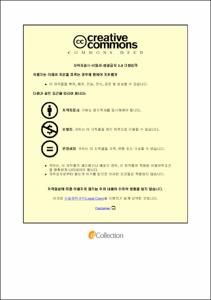Export Competition between Ethiopia and Kenya in the European Union
- Alternative Title
- 유럽연합에서 에티오피아와 케냐의 수출경쟁
- Abstract
- The relative competitiveness of exports plays an important role in determining the level of exports. It is especially important for developing and under developed nations, to boost their foreign exchange reserves, reduce their balance of payments deficit, and provide employment which would result in improved standards of living for all of the society. Unfortunately, due to regional and economic differences between nations, international competition still faces so many challenges. These challenges are more difficult in developing countries such as Ethiopia and Kenya, since their economy is based on only a few undiversified (agricultural) primary commodities. This study examines the export competition between Ethiopian and Kenyan commodities in nine selected European countries, (Germany, the Netherlands, Italy, France, the United Kingdom, Denmark, Finland, Sweden, and Spain) because they are the highest importers of Ethiopian and Kenyan products in Europe. The monthly time-series data covers the years 1993-2016. By refining a simple demand model of Seo and Kang (2016), the degree of competition has been estimated. This experiment has been conducted based on the Standard International Trade Classification (SITC) 05, 07, and 29 at a 2-digit level of products. The overall empirical results show that Kenya has a higher competitiveness in most exports compared to those of Ethiopia, in the nine selected European countries. Moreover, a decrease of relative price has had a positive and significant influence on the increase of Kenya’s exports. Whereas, an increase of an importing countries income encourages exports from Ethiopia significantly. In addition, the potential export threat is calculated using the Rivalry Threat Index (RTI) at SITC a 4-digit level in order to investigate the export threat at the disaggregated level of products whereby the estimation of elasticity of substitution cannot be performed. Although, the results from the estimation of elasticity suggested that Kenya had a higher competitiveness in most products against exports from Ethiopia, the RTI result exhibits that Kenya also faces a higher degree of export threat against exports from Ethiopia at the SITC 4- digit level in SITC 0545, SITC 0546, SITC 0548, SITC 0579, SITC 0711, SITC 0751, SITC 2911, SITC 2922 and SITC 2729 products.
수출의 상대적 경쟁력은 수출 수준을 결정하는데 중요한 역할을 한다. 개발도상국과 저개발국가에게는 외환보유고 신장, 무역수지 적자 해소, 사회전반을 위한 삶의 질 개선을 가져다 줄 고용을 제공하는 것이 특히 중요하다. 불행하게도 국가간에 지역이나 경제 차이로 인하여 국제경쟁은 아직도 아주 많은 도전에 직면해 있다. 이러한 도전은 에디오피아와 케냐 같은 개발도상국을 더욱 어렵게 하는데, 왜냐하면 그들의 경제가 불과 몇 개의 다양화 되지 않은 농업 같은 1차 상품에 기반을 두고 있기 때문이다. 본 연구는 9개의 선택된 유럽국가(독일, 네덜란드, 이탈리아, 프랑스, 영국, 덴마크, 핀란드, 스웨덴, 스페인)에서 에디오피아와 케냐의 수출 경쟁을 검토할 것이다. 9개 국가를 선택한 이유는 유럽 9개 국가는 유럽 내에서 에디오피아와 케냐의 최대 수입국이기 때문이다. 월간 시계열 데이터는 1993부터 2016년까지의 데이터를 사용하였다. 경쟁수준은 서와 강(2016)의 단순수요모형을 개량하여 추정하였다. 본 실험은 표준국제무역분류(SITC) 05, 07 그리고 29(2-digit)에 기초하여 처리했다. 종합적인 실증분석 결과는 9개의 유럽 국가에서 케냐는 경쟁국인 에디오피아와 비교하여 대부분의 수출에 더 높은 경쟁력을 가지고 있다는 것을 알 수 있다. 더욱이 상대적 가격의 하락은 케냐 수출의 증가에 긍정적이고 중대한 영향을 미쳤다. 반면 수입국의 소득 증대는 에디오피아로부터 수출을 현저히 촉진시키고 있다. 게다가 잠재수출위협은 대체탄력성의 평가를 수행할 수 없는 군별 수준의 제품들에서 수출 위협을 조사하기 위해서 표준국제무역분류 4-digit개별 수준에서 경쟁위협지수(RTI)를 사용하여 계산하였다. 비록 대체탄력성의 결과에서는 케냐가 에디오피아 수출품과 비교해 대부분 제품에서 더 높은 경쟁력을 가지고 있는 것으로 나타났지만, 경쟁위협지수 결과는 케냐가 SITC 0545, SITC 0546, SITC 0548, SITC 0579, SITC 0711, SITC 0751, SITC 2911, SITC 2922 and SITC 2729 제픔들에서 표준국제무역분류(SITC) 4-digit 개별 수준으로 에디오피아 수출에 비하여 더 높은 수출 위협 정도에 직면해 있음이 드러났다
- Issued Date
- 2018
- Awarded Date
- 2018.2
- Type
- Dissertation
- Publisher
- 부경대학교
- Affiliation
- 부경대학교 대학원
- Department
- 대학원 국제지역학과
- Advisor
- Utai Uprasen
- Table Of Contents
- Chapter 1- Introduction 1
1.1. Economic Overview of Ethiopia and Kenya 3
1.2. Statement of the Problems 10
1.3. Significance of the Study 11
1.4. Research Objectives 11
1.5. Research Hypothesis 12
1.6. Structure of the Study 12
Chapter 2- Literature Reviews 13
2.1. Theoretical Reviews 13
2.1.1. Elasticity of Substitution 15
2.2. Empirical Reviews 16
Chapter 3- Research Methodology 21
3.1. Model Specification 21
3.1.1. Estimation of Elasticity of Substitution: Simple Demand Model 21
3.1.2. The Rivalry Threat Index (RTI index)26
3.2. Research Data 30
3.3. Data Testing Tools 32
3.3.1. Unit Root Test: The Augmented Dickey Fuller 32
3.3.2. Bounds Test 43
Chapter 4 - Results and Analysis 48
4.1. Empirical Results for Elasticity of Substitution: Simple Demand Model 48
4.2. The Potential Export Threat: Rivalry Threat Index (RTI) 57
Chapter 5- Conclusions and Recommendations 82
5.1. Conclusions 82
5.2. Policy Recommendations 88
References 90
- Degree
- Master
- Files in This Item:
-
-
Download
 Export Competition between Ethiopia and Kenya in the European Union.pdf
기타 데이터 / 1.67 MB / Adobe PDF
Export Competition between Ethiopia and Kenya in the European Union.pdf
기타 데이터 / 1.67 MB / Adobe PDF
-
Items in Repository are protected by copyright, with all rights reserved, unless otherwise indicated.